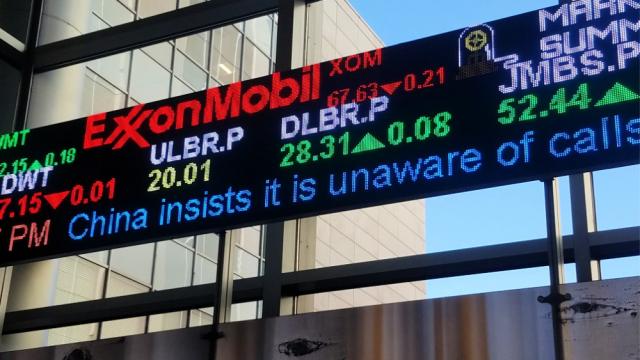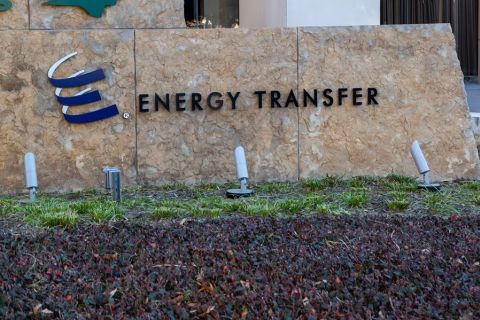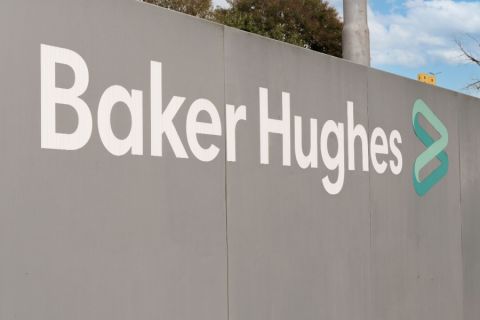
Exxon Mobil’s production will remain flat in the second half of 2022 with higher volumes from the Permian Basin and offshore Guyana being offset by divestments. (Source: photo-denver / Shutterstock.com)
Exxon Mobil Corp. is using its second-quarter balance sheet strength to return significant capital to its shareholders via dividends and share buybacks with plans to continue such distributions going forward.
Analysts anticipate improvement in the upstream segment to flow through fiscal year 2022 on positive demand outlook and favorable market fundamentals.
“Key to our success is continued investment in our advantaged portfolio, including Guyana, the Permian, global LNG, and in our high-value performance products, along with efforts to reduce structural costs and improve efficiency,” Exxon Mobil Chairman and CEO Darren Woods said July 29 during the second quarter webcast. “At the same time, we’re supporting the transition to a lower-emission future, growing our portfolio of opportunities in carbon capture and storage, biofuels, and hydrogen.”
RELATED:
Exxon Mobil Posts Record-breaking Second-quarter Profit
Spending Continues
Exxon Mobil has continued to make investments in anticipation of post-pandemic demand recovery.
“Despite much criticism, we have been investing more than any other IOC, in anticipation of tighter balances” due to weakening supply,” Woods said, adding that “between 2017 and 2021, we invested nearly $90 billion to grow oil and natural gas production.”
Exxon Mobil’s capex reached $4.6 billion in the second quarter and is running at $9.5 billion year-to-date. For 2022, the company expects capex to fall between $21 billion-$24 billion, reflecting increased investment in “chemical and short-cycle projects with strong returns.”
Notable advancements within Exxon Mobil’s portfolio include discovery of new resources offshore Guyana, progressing LNG production in Mozambique, noncore assets divestments of over $3 billion and a planned refining capacity expansion on the U.S. Gulf Coast.
Also, Exxon Mobil’s Beaumont refinery expansion will boost refining capacity on the U.S. Gulf Coast by over 17%,
or approximately 250,000 bbl/d, in the first quarter of 2023, Woods said.
Dividends and Share Buybacks
Exxon Mobil reported cash flow from operations of $20 billion for the April-June period. The firm returned $7.6 billion to shareholders during the quarter through dividends and share buybacks, split with $3.7 billion for dividends and $3.9 billion for share repurchases. Year-to-date the share repurchases amount to $6 billion and Exxon Mobil eyes repurchasing up to $30 billion shares through 2023.
“The increase in distributions reflects the confidence we have in our strategy, the performance we are seeing across our businesses, and the renewed strength of our balance sheet,” Exxon Mobil CFO Kathryn Mikells said.
Wells Fargo analysts highlighted at least one issue with Exxon Mobil’s plans. “Despite the company’s pledge to return approximately $30 billion via share repurchases and a nearly equivalent amount via dividends in 2022 and 2023, skepticism seems to remain.”
“Given the pace of cash flow generation, some investors would like to see a further increase in pace of buybacks,” Credit Suisse Analyst Manav Gupta highlighted July 29 in a research note to clients.
Production Hiccups
Exxon Mobil’s production in the second quarter exceeded 3.8 MMboe/d, excluding entitlements and Russia curtailments. In the second half of 2022, production will remain flat with higher volumes from the Permian Basin and offshore Guyana being offset by divestments.
“We now expect price-driven entitlements, curtailments in Russia, and divestments in aggregate to reduce our production by about 100,000 barrels a day in the third and fourth quarters—similar to the impact we saw in the second quarter,” Mikells said.
Aside from impacts due to weather and other issues, production from Exxon Mobil’s advantaged assets in the Permian Basin in the U.S. as well as offshore Guyana continue to deliver strong results.
Exxon Mobil’s production in the Permian Basin is up nearly 130,000 boe/d year-to-date, or over 30% compared to the first half of 2021. Permian production averaged over 550,000 boe/d in the second quarter and is forecast to rise 25% in 2022 compared to 2022 while routine flaring is also expected to be eliminated by year end.
Guyana’s production capacity is above 340,000 boe/d from Exxon Mobil’s first two offshore developments owing to commencement of production from Liza Phase 2 earlier this year and Liza Phase 1 producing over design capacity. Liza Phase 2 has a capacity of 220,000 bbl/d while Liza Phase 1 is producing more than 10% above its design capacity of 120,000 bbl/d.
Exxon Mobil recently announced two new finds offshore Guyana and natural gas supply agreement to help the South American country drive down domestic energy costs while providing opportunities for industrial growth.
Recommended Reading
Talos Energy Expands Leadership Team After $1.29B QuarterNorth Deal
2024-04-25 - Talos Energy President and CEO Tim Duncan said the company has expanded its leadership team as the company integrates its QuarterNorth Energy acquisition.
Energy Transfer Ups Quarterly Cash Distribution
2024-04-25 - Energy Transfer will increase its dividend by about 3%.
ProPetro Ups Share Repurchases by $100MM
2024-04-25 - ProPetro Holding Corp. is increasing its share repurchase program to a total of $200 million of common shares.
Baker Hughes Hikes Quarterly Dividend
2024-04-25 - Baker Hughes Co. increased its quarterly dividend by 11% year-over-year.
Weatherford M&A Efforts Focused on Integration, Not Scale
2024-04-25 - Services company Weatherford International executives are focused on making deals that, regardless of size or scale, can be integrated into the business, President and CEO Girish Saligram said.






